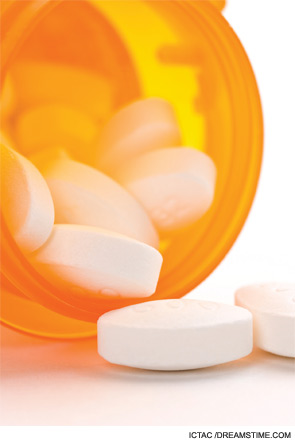
New Drug Information
Belimumab (Benlysta) finally received Food and Drug Administration (FDA) approval on March 9, 2011, to treat patients with active, autoantibody-positive systemic lupus erythematosus (SLE) who are receiving standard therapy.1 Belimumab is administered by intravenous infusion and is the first B-lymphocyte stimulator protein inhibitor to be approved by the FDA. The last SLE drugs to be FDA approved were hydroxychloroquine and corticosteroids.
Recent data reported on denosumab from the European Congress Osteoporosis and Osteoarthritis meeting in Valencia, Spain, showed that women treated for postmenopausal osteoporosis with denosumab had convincing bone mineral density (BMD) gains after five continuous years of treatment (7.0% total hip BMD versus 13.7% lumbar spine BMD).2 The data were from the open-label extension (beyond three years) of the pivotal Fracture REduction Evaluation of Denosumab in Osteoporosis every 6 Months (FREEDOM) study, which is continuing out to 10 years. Currently 4,550 patients are receiving denosumab. Continued denosumab treatment has resulted in consistent BMD gains in the lumbar spine and total hip. The incidences of new osteoporotic fractures also have remained low for participants. For women who transitioned from placebo to denosumab, significant BMD increases (all P<0.0001 compared with extension baseline) were attained with a 4.1% increase in total hip BMD and a 7.9% increase in lumbar spine BMD. Adverse events occurred in approximately 83% of patients. Two subjects had osteonecrosis of the jaw that healed without further complications. No atypical femoral fractures were reported in either group.
The National Institute for Health and Clinical Excellence (NICE) has issued a final draft guidance for golimumab in treating psoriatic arthritis.3,4 In the guidance, treatment is recommended for adults only with active and progressive psoriatic arthritis if it is used as described for other tumor necrosis factor (TNF) inhibitors and the manufacturer provides both the 100-mg dose and 50-mg dose at the same cost as the 50-mg dose.5 Practitioners need to use the Psoriatic Arthritis Response Criteria to make any treatment adjustments. NICE has not yet issued the final approval to the National Health Service.
Hydromorphone extended release (Exalgo) was approved by the FDA on March 1, 2011, to treat moderate-to-severe pain in opioid-tolerant patients requiring continuous, around-the-clock analgesia for an extended period of time, including those with low back pain.6,7 Exalgo was formulated with the OROS osmotic drug delivery system to minimize drug peaks and troughs that occur when patients are dosed at more frequent intervals throughout the day. It was studied in doses of 8 mg to 64 mg once daily and will be available in 8-mg, 12-mg, and 16-mg dosage strengths. The most common adverse reactions in trials were constipation, nausea, vomiting, somnolence, headache, and dizziness, so clinicians also should prescribe a bowel regimen for patients and monitor them for central nervous system side effects. Breaking, chewing, dissolving, or crushing the tablets leads to rapid release and absorption of a potentially fatal hydromorphone dose, therefore this formulation is not abuse deterrent and has a high likelihood for abuse.